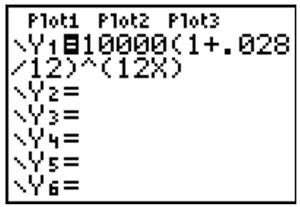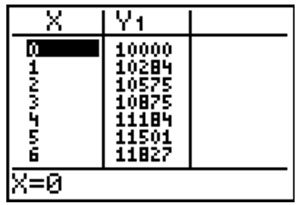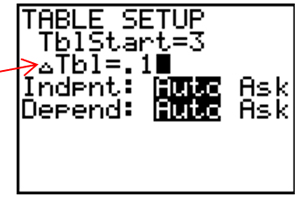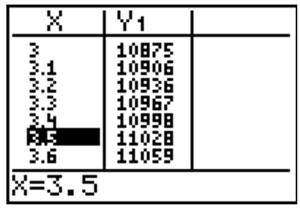
In this lesson, you will learn how to determine the solution to an exponential equation using tables and/or graphs.
Celeste deposited $10,000 into a savings account that pays 2.8% compounded monthly. The equation below represents the amount of money, A, Celeste will have in t years.

Celeste wants to know how many years will it take her to earn $1,000 in interest.
To solve this using a table, you should understand that Y1 represents the amount of money that will be in the savings account after x years.
Step 1: Enter equation into [Y=].

Step 2: Go to table.
How long will it take Celeste to earn $1,000?

Step 3: To access TABLE SETUP menu, choose
[2nd][Window]
To get a more precise answer, change the table interval to 0.1
Why was TblStart set to 3?

Step 4: Go back to the table.
Based on this table, how many years will it take Celeste to earn $1,000?
